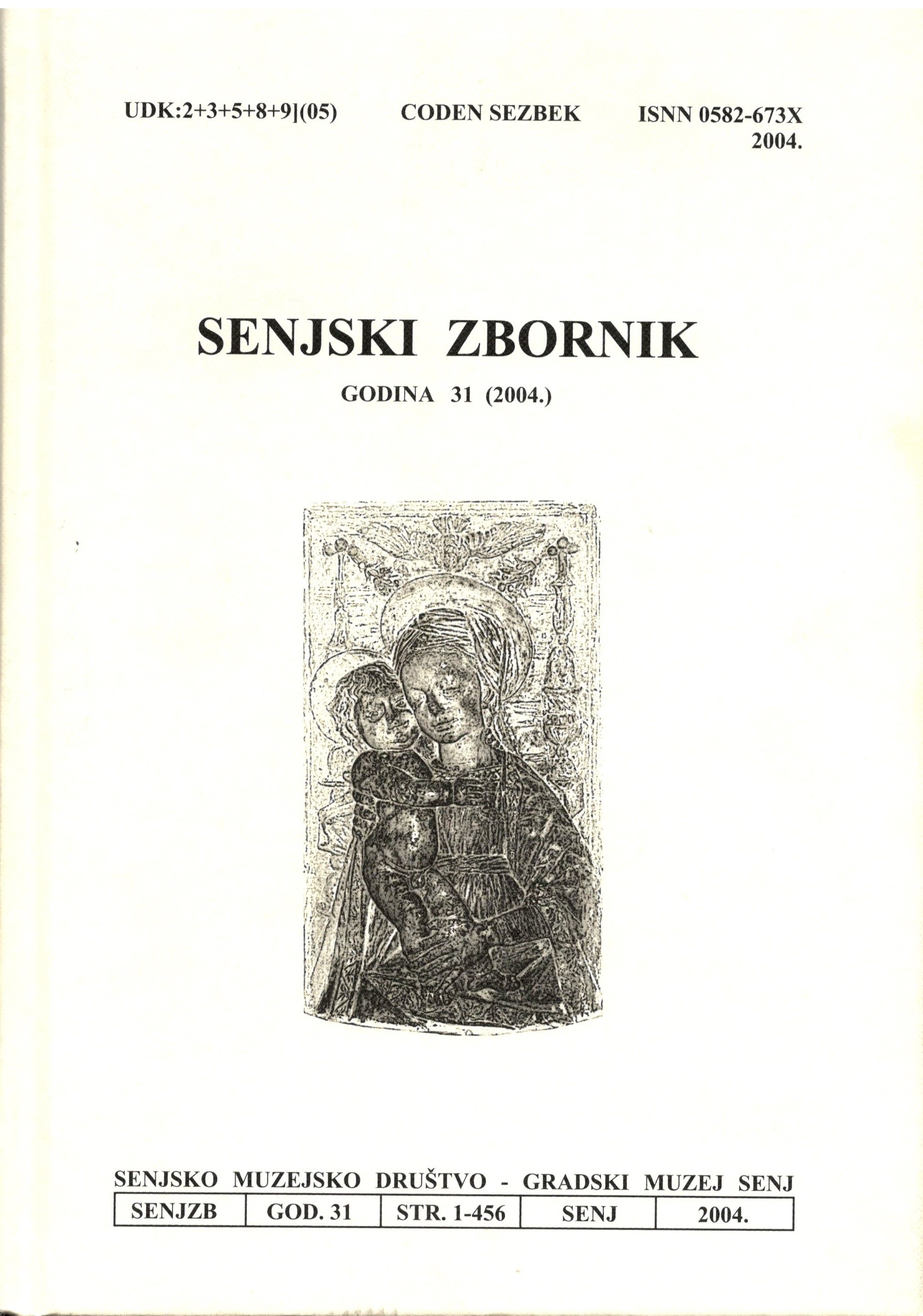Transport i opskrba vodom na području Krivog Puta
Transport and Water Supply in the Krivi Put Region
Author(s): Danijela Birt KatićSubject(s): Agriculture, Regional Geography, Transport / Logistics
Published by: Senjsko muzejsko društvo i Gradski muzej Senj
Keywords: transport; water supply; Krivi Put;
Summary/Abstract: In this article ‘Transport and Water Supply in the Krivi Put region’ are presented the results of two field works carried out during June 2003 and May 2004 in the region inhabited by the costal Bunjevci. The field works encompassed these localities: Alan, Vrtlina, Rupa, Zamalić, Podbilo, Simerići, Spalji, Cupići, Žuljevići, Francikovac, Krivi Put, Veljun, Šojatski Dolac, Mrzli Dol. I used questionnaire No. 3 (subjects No. 98 wooden dishes, bark, pumpkin; 100. yoke; 101 horse’s equipment; 102 working wagon, sledges, skid) designed for the purposes of the former Ethnological Atlas of Yugoslavia, published by the Faculty of Philosophy in Zagreb. After the first field work and introduction to the local circumstances, I designed a questionnaire adapted for this region because I noticed some specifics which needed to be additionally researched and checked. I used the technique of structural and non-structural interview. My work was designed as an overview of transport utilities and water supply. Here are extracted only some characteristic segments of the whole subject: the wagon and its usage, pack-saddle and its usage, horses and ox equipment, cart services and water supply (wells, ponds, wooden dishes).I tried to reconstruct the appearance of wagon which does not exist in this region any more; record and compare data for the whole region of Krivi Put. I have the same approach to some other subjects. Analysis of the data was carried out through periods of time which allowed the perception of gradual changes in names, pieces and the most notable change which was introduction of the iron wagon and its adaptation.Sayings were mostly related to the period during and after WWII and some of them were related to the first half of the 20th century. The 1970’s were the turning point when depopulation started and the majority of the population migrated towards towns, mostly to Senj.The comparison of data regarding these subjects to data received in surrounding regions might give interesting results. Unfortunately this approach goes beyond frames of this work and should be applied in further treatment of these subjects.
Journal: Senjski zbornik - prilozi za geografiju, etnologiju, gospodarstvo, povijest i kulturu
- Issue Year: 31/2004
- Issue No: 1
- Page Range: 159-188
- Page Count: 30
- Language: Croatian

